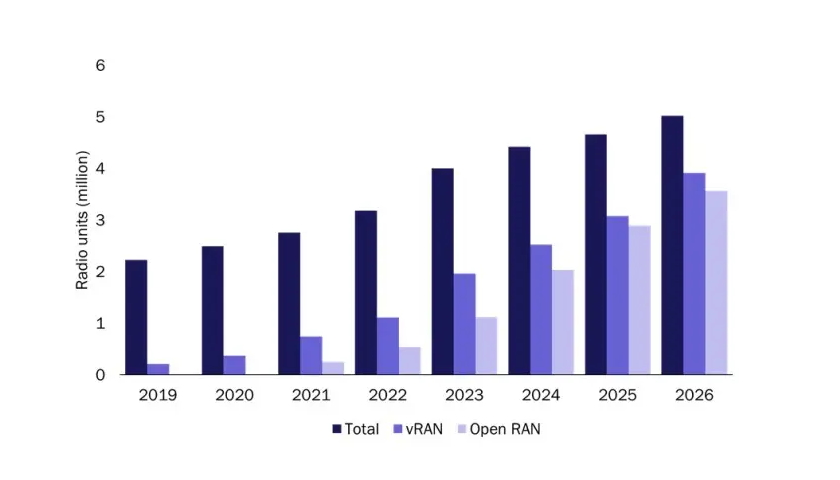Private 5G networks enable enterprises to secure dedicated bandwidth, custom-tailoring their experience based on their specific needs — whether it’s to assure dedicated coverage, provide coverage where none may be available otherwise or whether it’s to offer higher levels of privacy or security than are available on public networks, massive bandwidth, capacity, or specialized functionality such as low latency. Private networks are fueling another opportunity for enterprises to control their entire mobile communication stack through the deployment of Open RAN technology.
A report published by Analysys Mason earlier this year provided some context for the reasons why Open RAN is an attractive alternative for private network operators.
“Open RAN, especially when combined with shared or industrial spectrum, can help to enable a diversity of private wireless deployers, which will be important to meet the varying use cases and roll-out scenarios of different enterprises,” wrote Caroline Gabriel, research director at Analysys Mason.
“Open RAN deployment in private networks also promises to make private cellular networks more easily deployable and manageable due to open reference designs that are akin to those used in enterprise Wi-Fi. Opening up the ecosystem to new vendors means that a wide range of solutions can emerge that are optimized for various price points, physical environments and use cases, so those deploying networks can select the best price/performance characteristics for their customers,” wrote Gabriel.
Gabriel predicted that current Open RAN design suitability for private networks, coupled with a desire for simplicity in private network designs, will drive Open RAN success in the private space.
“The private cellular opportunity mitigates the risk for vendors that Open RAN will miss its chance entirely in the macro network market (either because performance and other challenges take too long to address, or because most MNOs feel safer with their established vendors),” she wrote.
She pointed out that some of the same constraints to keep Open RAN from widespread adoption on macro networks make it intrinsically better-suited for private network environments.
“Nearly all enterprise networks have lower and more predictable traffic loads than 5G urban public networks, and are geographically constrained. The network is critical to enterprises’ business, but it will rarely need to support the same density of devices using high-bandwidth applications in a given location as a public network would, so the processing burden on the platform will be considerably lower than that in the macro RAN,” said Gabriel.
To better understand the role of Open RAN can play in private networks, RCR Wireless News spoke with Jagadeesh Dantuluri, general manager of private and dedicated networks for test and measurement firm Keysight Technologies, during the Open RAN Global Forum. Keysight has implemented Open RAN in its facilities, and has seen strong private networking growth in specialized markets like manufacturing, energy, mining, ports, supply chain and medical. Dantuluri underscored that private 5G networks and Open RAN itself are not means to an end, they’re simply technology enablers that open up a new host of possibilities for business.
“Neither 5G nor O-RAN technology by itself is a business case,” said Dantuluri. “Each private network has its own use case. In manufacturing, the requirement could be ‘five nines’ coverage and connectivity, or the latencies have to be very minimal,” he said, referring to the goal of 99.999% uptime.
Read more: rcrwireless.com





